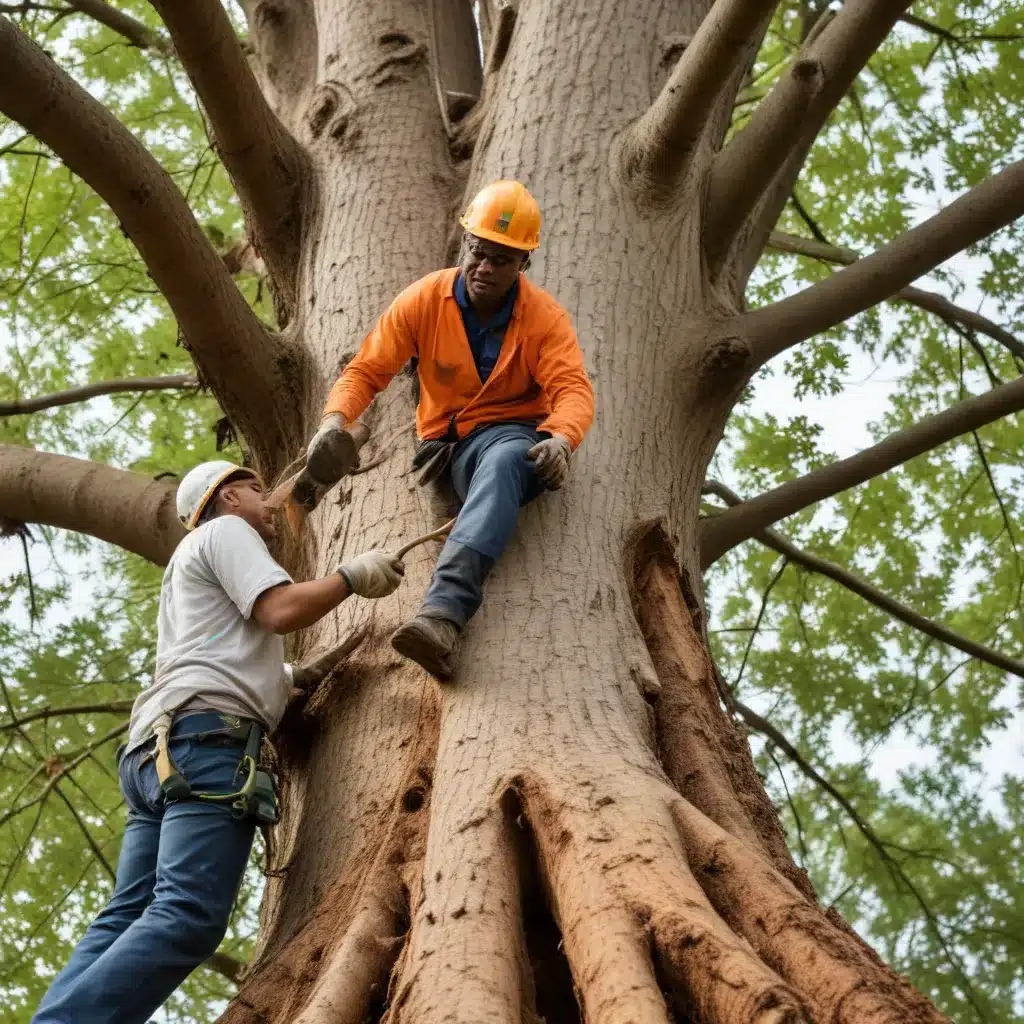
The removal of trees, whether due to disease, damage, or development needs, is a delicate and often contentious issue within local communities. As tree care specialists, our role at TriCounty Tree Care extends beyond the technical aspects of tree removal – we recognize the importance of engaging with stakeholders and incorporating community perspectives to ensure the decision-making process is transparent, inclusive, and ultimately, beneficial for the environment and the people we serve.
Stakeholder Engagement
Identifying Stakeholders
The first step in effectively managing tree removal projects is to identify the relevant stakeholders. These include not only the direct beneficiaries or targets of the effort, such as homeowners or businesses, but also those whose lives or jobs may be affected, government officials, and individuals or groups with a vested interest in the outcome, even if they are not directly impacted. By taking a comprehensive approach to stakeholder identification, we can ensure that all perspectives are considered and potential conflicts are addressed proactively.
Stakeholder Consultation Strategies
Once the stakeholders have been identified, it is essential to develop effective consultation strategies to engage them in the decision-making process. This may involve organizing public meetings, conducting surveys, or holding one-on-one discussions to understand their concerns, priorities, and desired outcomes. By actively listening to stakeholders and addressing their legitimate interests, we can build trust and foster a sense of shared ownership in the tree removal process.
Incorporating Stakeholder Feedback
The insights and feedback gathered from stakeholders should be carefully incorporated into the decision-making process. This may involve adjusting the scope or timing of a tree removal project, exploring alternative solutions, or developing mitigation strategies to address the concerns of affected parties. By demonstrating that stakeholder input is valued and has a meaningful impact on the final outcomes, we can enhance the legitimacy and acceptance of our actions within the community.
Community Involvement
Engaging Local Residents
Beyond the formal stakeholder engagement process, it is crucial to actively engage with local residents who may be impacted by tree removal projects. This can involve organizing community meetings, distributing informational materials, and maintaining open communication channels to address questions, concerns, and suggestions. By fostering a sense of transparency and collaboration, we can build trust and cultivate a shared understanding of the rationale behind the decisions.
Gathering Community Perspectives
In addition to direct stakeholder feedback, we should also seek out broader community perspectives on the value of urban trees, the importance of environmental sustainability, and the long-term impacts of tree removal. This may involve conducting surveys, hosting public forums, or collaborating with local environmental organizations to gather a more comprehensive understanding of community priorities and concerns.
Collaborative Decision-Making
Whenever possible, we should strive to incorporate community input into the final decision-making process. This may involve the formation of advisory committees, the establishment of collaborative planning processes, or the implementation of participatory decision-making models. By actively involving the community in the decision-making process, we can ensure that the final outcomes reflect the diverse needs and perspectives of the people we serve.
Decision-Making Process
Factors Influencing Decisions
The decision to remove a tree is often a complex one, influenced by a variety of factors, including environmental considerations, public safety concerns, and economic impacts. As tree care specialists, we must carefully weigh these factors and ensure that the decision-making process is transparent and accountable to the community.
Transparency and Accountability
To maintain the trust and confidence of stakeholders, it is essential that the decision-making process is transparent and accountable. This includes clearly communicating the rationale behind tree removal decisions, documenting the process, and providing regular updates and reports to the community. By upholding these principles, we can demonstrate our commitment to responsible and ethical tree management practices.
Environmental Sustainability
Tree Preservation
Whenever possible, we should prioritize tree preservation over removal. This may involve assessing the overall health and structural integrity of trees, exploring alternative solutions such as pruning or cabling, and considering the long-term environmental benefits of maintaining a healthy urban forest. By demonstrating a commitment to preserving trees, we can foster a greater appreciation for the ecological value of these vital resources.
Urban Forestry Management
In addition to individual tree removal decisions, we must also consider the broader implications of urban forestry management. This includes maintaining comprehensive tree inventories, developing long-term planning strategies, and implementing effective maintenance and monitoring protocols. By taking a holistic approach to urban forestry, we can ensure the sustainability and resilience of the local tree canopy, which provides critical ecosystem services and contributes to climate change mitigation efforts.
Outcomes and Impacts
Improved Community Relations
By actively engaging stakeholders, incorporating community feedback, and demonstrating a commitment to transparency and accountability, we can improve community relations and foster a sense of shared ownership in the tree removal process. This can lead to increased trust, reduced conflicts, and a greater willingness to collaborate on future tree care initiatives.
Positive Environmental Effects
Ultimately, the goal of our tree removal and community engagement efforts should be to promote positive environmental outcomes. By preserving healthy trees, replanting where necessary, and managing the urban forest in a sustainable manner, we can maintain critical canopy cover, support local ecosystems, and contribute to broader climate change mitigation efforts. These positive environmental effects will have far-reaching impacts on the communities we serve.
By embracing a collaborative and community-oriented approach to tree removal, TriCounty Tree Care is committed to delivering the best possible outcomes for our clients, the environment, and the local communities in which we operate. Through continued stakeholder engagement, transparent decision-making, and a focus on environmental sustainability, we strive to be a trusted partner in the stewardship of our urban forests.


